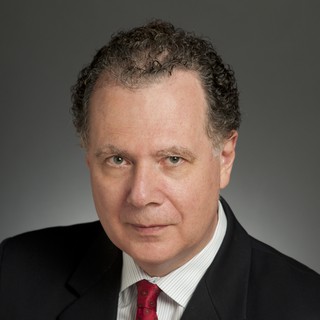Sometime in 2011 the total number of film plots with the keyword “zombie” passed the number of film plots with the keyword “cowboy,” according to the Internet Movie Database. One might argue that the zombie has become the great American archetype of the postmodern era, as the cowboy was the American archetype a century ago. With the release of Brad Pitt’s $200 million zombie epic World War Z, what used to be the stuff of low-budget shockers has entered the American cultural mainstream. Therein lies a lesson.
“The history of the world is the history of humankind’s search for immortality,” I argued in my 2011 book Why Civilizations Die (and Why Islam is Dying, Too). Human beings can’t tolerate life without the hope of some existence beyond our brief mortal span of years. Cultures that know they have made it past their best-used-by date tend to die for lack of interest. Extreme examples are the neolithic tribes that walk out of the Amazon to encounter modernity, and succumb to alcoholism and other vices in a matter of years. Less extreme examples are the radical Muslims who declare that they love death more than we love life, or the European nations whose fertility rate is so low that their national survival is questionable at the hundred-year horizon. I argued in Civilizations that the so-called Arab Spring was a paroxysm of cultural despair, the prelude to societal breakdown with appalling consequences; watching the dreadful events in Egypt and Syria, few today can dismiss this thesis as alarmist.
Dying cultures are the living dead. Half of the world’s 6,000 languages will disappear by the end of this century. They are zombie cultures. But we Americans are gestating a zombie culture inside what used to be a “country with the soul of a church,” as G.K. Chesterton put it. The hedonistic narcissism that took over popular culture during the 1960s produced a spiritual deadening like nothing in American history. That’s why we are so fascinated with zombies. We identify with them.
Few living poets express this spiritual deadening as eloquently as the Syrian Ali Ahmad Said, who writes under the pen name Adonis. He maintains that the Arabs already are an extinct people, as I reported in my Asia Times column some years ago: “We have become extinct. … We have the masses of people, but a people becomes extinct when it no longer has a creative capacity, and the capacity to change its world. … The great Sumerians became extinct, the great Greeks became extinct, and the Pharaohs became extinct.” Adonis hauntingly conveys the sense of living death, as in these extracts from his poetry:
Each day is a child/ who dies behind a wall/ turning its face to the wall’s corners.
When I saw death on a road/ I saw my face in his. My thoughts resembled locomotives/ straining out of fog/ and into fog.
“We must make gods or die./ We must kill gods or die,”/ whisper the lost stones in their lost kingdom.
Strangled mute/ with syllables/ voiceless,/ with no language/ but the moaning of the earth,/ my song discovers death/ in the sick joy/ of everything that is/ for anyone who listens./ Refusal is my melody./ Words are my life/ and life is my disease.
Americans don’t read much poetry, but they do watch movies. There is something especially compelling about the image of dead people walking, I wrote in a May, 2012 essay for Asia Times. We understand this more clearly if we consider the opposite, namely the concept of eternal life arising from God’s promise to Abraham and his descendants and embodied in the Temple at Jerusalem. In a brilliant 2008 book, Resurrection, Harvard professors Kevin Madigan and Jon D. Levenson argue:
The ancient Israelites, altogether lacking the materialist habit of thought so powerful in modernity, did not conceive of life and death as purely and exclusively biological phenomena. These things were, rather, social in character and could not, therefore, be disengaged from the historical fate of the people of whom they were predicated.
Contrasting the promise of eternal life with the fear of living death, I argued, helps make sense of our fascination with zombies, as we’ll explore after the page break.
Responding to Madigan and Levenson in my Asia Times column, I argued:
The Temple at Jerusalem was the physical manifestation of God’s promise in this world, “a paradise-like place where God, for all his purity and holiness, is nonetheless available on earth and his blessing as abundant.” It is the antipode to the grave, a “fountain of life” (Psalm 36:9). In ancient Israel the whole male population was required to present itself at the Temple for the three annual pilgrimage festivals, and sang (Psalm 115): “It is not the dead who praise the Lord, those who go down to the place of silence; it is we who extol the Lord, both now and forevermore.”
Much of what we know about Temple ritual clarifies ancient Israel’s understanding of eternal life. A member of the hereditary priest-caste, the Kohanim, couldn’t preside over Temple sacrifices if he had come into contact with a corpse, which causes ritual defilement. Nor could a priest with a physical defect officiate at the Temple, presumably for a similar reason: nothing that bespeaks physical corruption has a place in the Temple service. No animal with a blemish or a defect might be sacrificed, and no priest with a physical defect could perform the sacrifice. The Temple service, the “fountain of life,” excludes all contact with death and the appearance of physical corruption.
Christianity’s salvific claims, in turn, rest on continuity with the Temple. In Matthew 12, for example, Jesus asserts that his disciples have the authority to break the Sabbath and gather grain, by the same authority that allows the priests in the Temple to perform sacrifices on Sabbath. “The Son of Man is Lord of the Sabbath,” Jesus states, in the first explicit Christological declaration in the Gospels. He claims that his person embodies the Temple as the source of eternal life. Pope Benedict XVI in his 2007 book Jesus of Nazareth emphasizes this passage, citing the work of Rabbi Jacob Neusner.
The biblical symbolism of the Temple – the embodiment on earth of God’s promise of eternal life to Israel – is worth contrasting with images of the walking dead. I do not mean to suggest that the makers of zombie films intentionally set out to pervert the symbolism of the Bible – I doubt any of them bother to read Leviticus 22. Nonetheless, the death-ravaged features of the zombie herd convey the concept of collective death just as vividly as the Kohanim represented the ancient Israel’s collective life.
With the destruction of the Temple in 70 CE, to be sure, the priestly ritual was suspended. Rabbinic Judaism transplanted the holiness of the Temple into synagogue and home. The detailed attention that observant Jews devote to the rules of the kosher kitchen may seem strange to the casual observer, until it is considered that the Jewish home is intended to be a sort of Temple in exile, and its Sabbath table an extension of the Temple altar.
Among Christians, the identification of holiness with bodily integrity persists in the notion of incorruptibility of saints among Catholics and especially Orthodox Christians.
How quaint, how superstitious these ancient notions of eternal life seem to the secular modern world, and how strange and primitive the rituals which sustained the Psalmist’s conviction that God would not abandon his servants to the grave. Modernity tells that nothing in the universe cares whether we exist or not, and where the meaning of our lives is concerned, we are all on our own.
We think of ourselves as rational folk. And yet we find almost 10 million pairs of eyes glued to the television screen each week when a new episode airs of “The Walking Dead,” enthralled by the same images, but in reverse: the walking dead in place of the dead awaiting resurrection, animated corpses instead of wholesome priests or uncorrupted saints, a terrified band of survivors huddled against encroaching death instead of the happy procession of God’s people to the source of eternal life.
We have dismissed the Jewish and Christian hope of eternal life as superstition offensive to reason, but instead, we find ourselves trapped in a recurring nightmare. We know that we will die, but (as Woody Allen said) we don’t want to be there when it happens. We act as if exercise, antioxidants and Botox will keep the reaper away, but we know that our flesh one day must putrefy nonetheless. The more we try to ignore death, the more it fascinates us. The more we tell ourselves that mortality doesn’t apply to us, the more it surrounds us. And the more we try to fight off the fear, the more we feel like the beleaguered survivors resisting the zombie herd.
Academic research tells us that nearly 150,000 languages have been spoken on this planet since the dawn of humanity; 6,000 remain. We can decipher fewer than 100 of the extinct ancient languages. The historical norm is for cultures to sink into the zombie herd and disappear. The survival of only one culture between the Indus and the Nile over the past 3,500 years is the exception.










Join the conversation as a VIP Member